What is Loopscale?
Loopscale is a DeFi protocol on Solana that replaces traditional pool-based lending with an order-book architecture that allows lenders and borrowers to match directly and set fixed terms. Rather than depositing into a communal pool with variable rates, participants on Loopscale define collateral, loan duration, and interest to create a more efficient credit market on-chain.
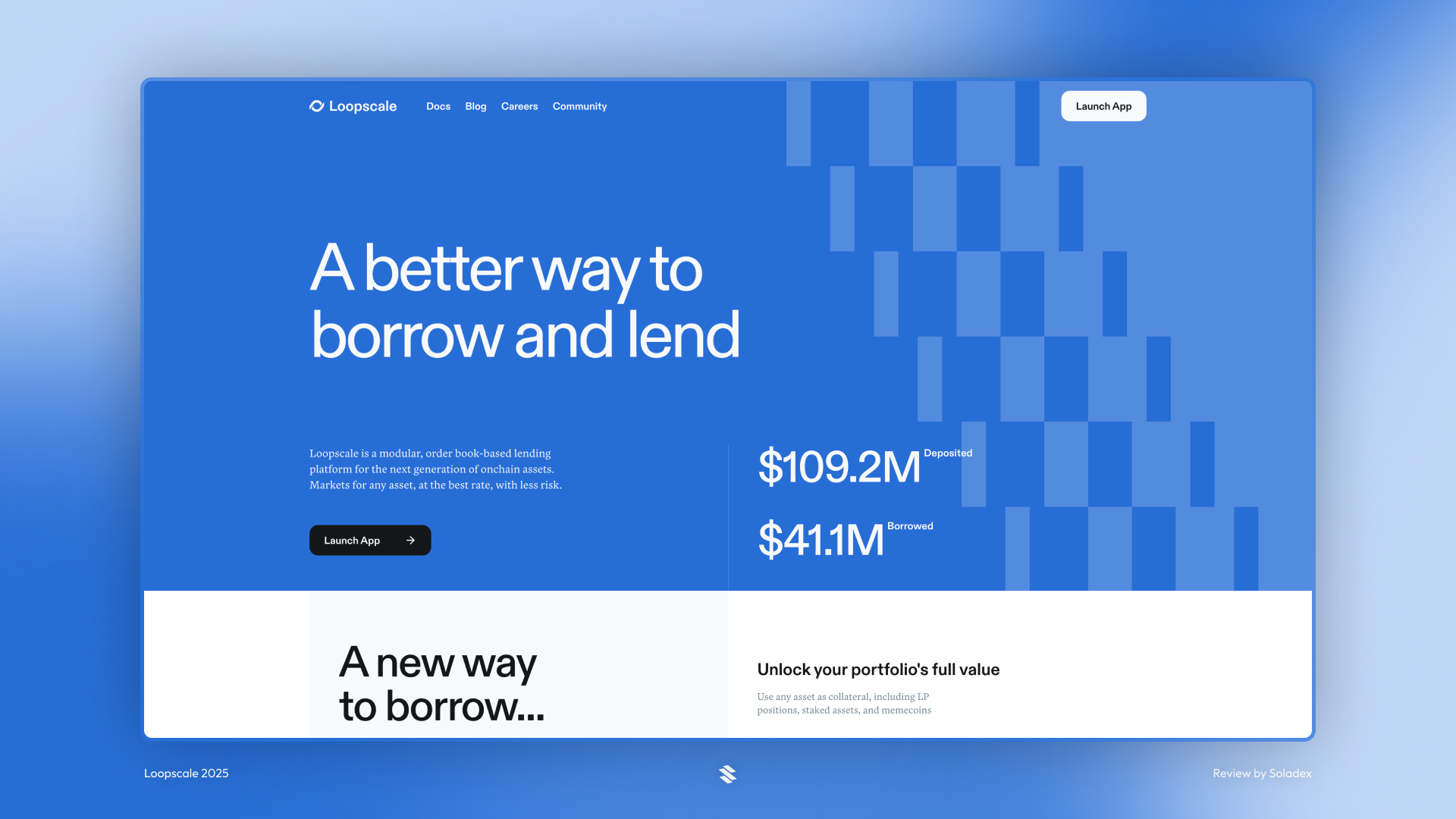
How It Works
Lending and Borrowing
A lender specifies the types of collateral, rate, and duration, and a borrower finds a matching offer and borrows against that collateral. Collateral can be standard assets (such as USDC and SOL) or more complex ones (staked tokens, LP positions).
Vaults and Loops
Users can deposit into curated vaults, which apply strategies to generate returns on the assets or engage in Loops, a one-click leveraged yield strategy using yield-bearing assets.
Fixed-Rate, Fixed-Term
Loans are locked at a specific rate and duration, providing borrowers with predictability and lenders with clearer exposure to risk and reward.
Wide Collateral Support
Loopscale aims to support multiple asset types, such as staked tokens, LP tokens, tokenized real-world assets (RWAs) on Solana.
What are the Key Features of Loopscale?
Loopscale introduces a more efficient approach to DeFi lending through direct lender-borrower matching, rather than traditional pool models. It also supports customizable collateral markets that isolate risk within each segment for a safer lending mechanism. The following section demonstrates some of the features of Loopscale.
Lend
Supply idle assets on Loopscale to earn yield on your tokens. Select from any of the token options in the Loopscale vaults to earn as high as 12% annual percentage yield on your assets. These funds are deployed across multiple markets where Loopscale operates to maintain the yield they offer to depositors.
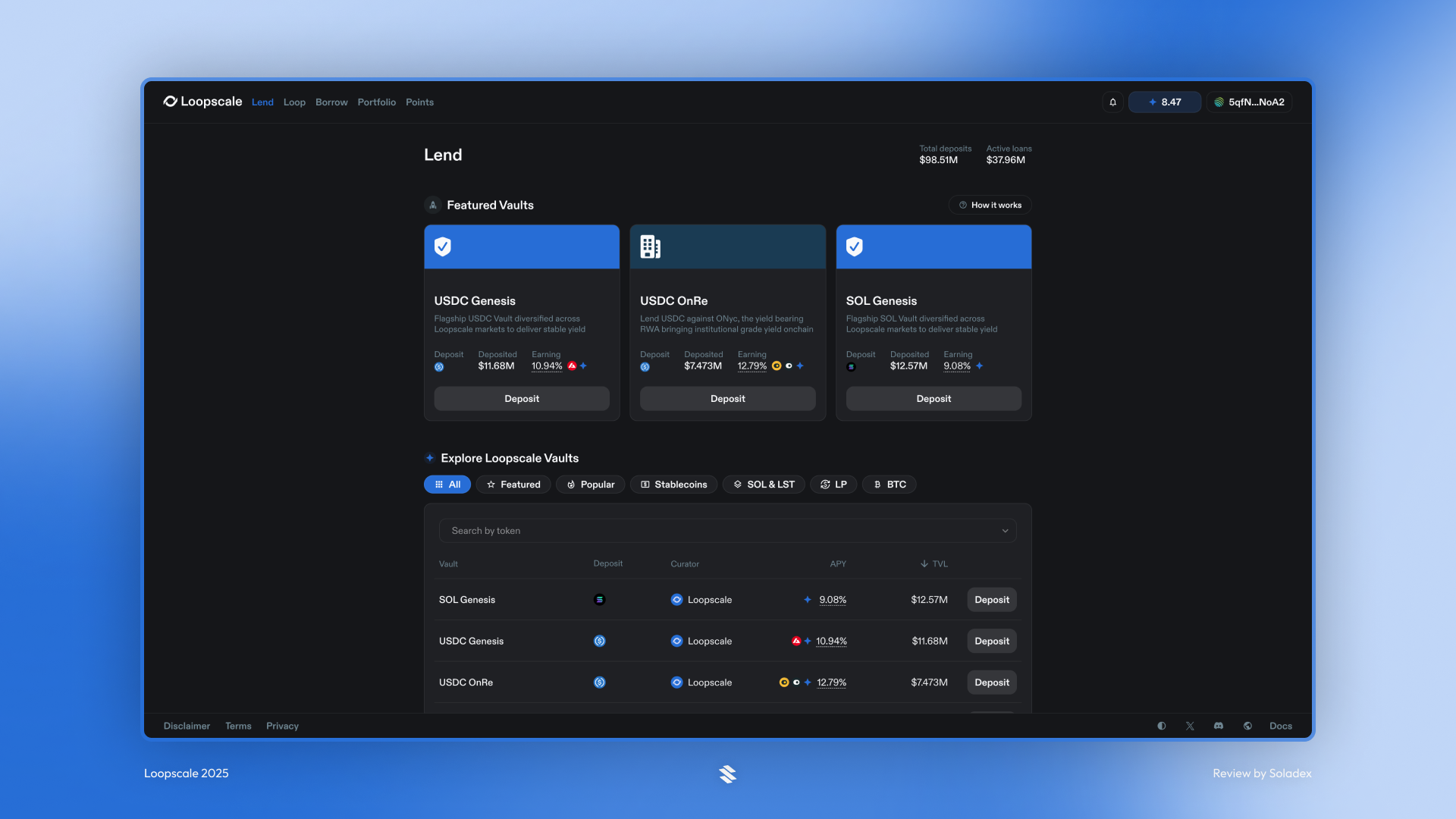
I just deposited into the USDC Genesis pool.
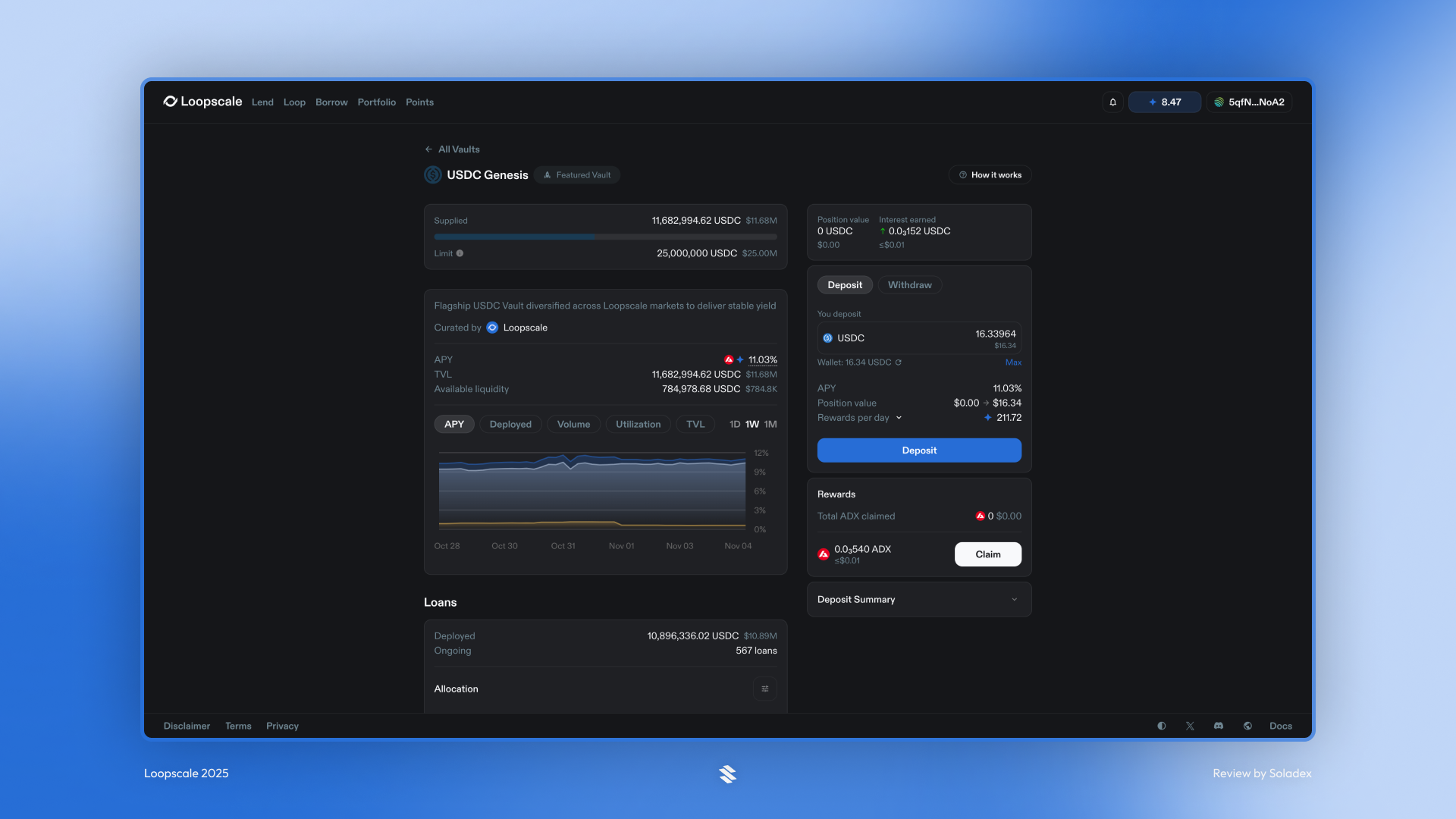
How the Leverage Loop Works
On Loopscale, you can choose up to 9x leverage and deposit the supported asset of your choice (sHYUSD in my case) to increase your exposure (I used a 2.7x). The looping process involves borrowing hyUSD against your sHYUSD and swapping it for more sHYUSD, effectively compounding your position. You earn yield when sHYUSD outperforms hyUSD by benefiting from leveraged fees while paying a fixed borrowing rate.
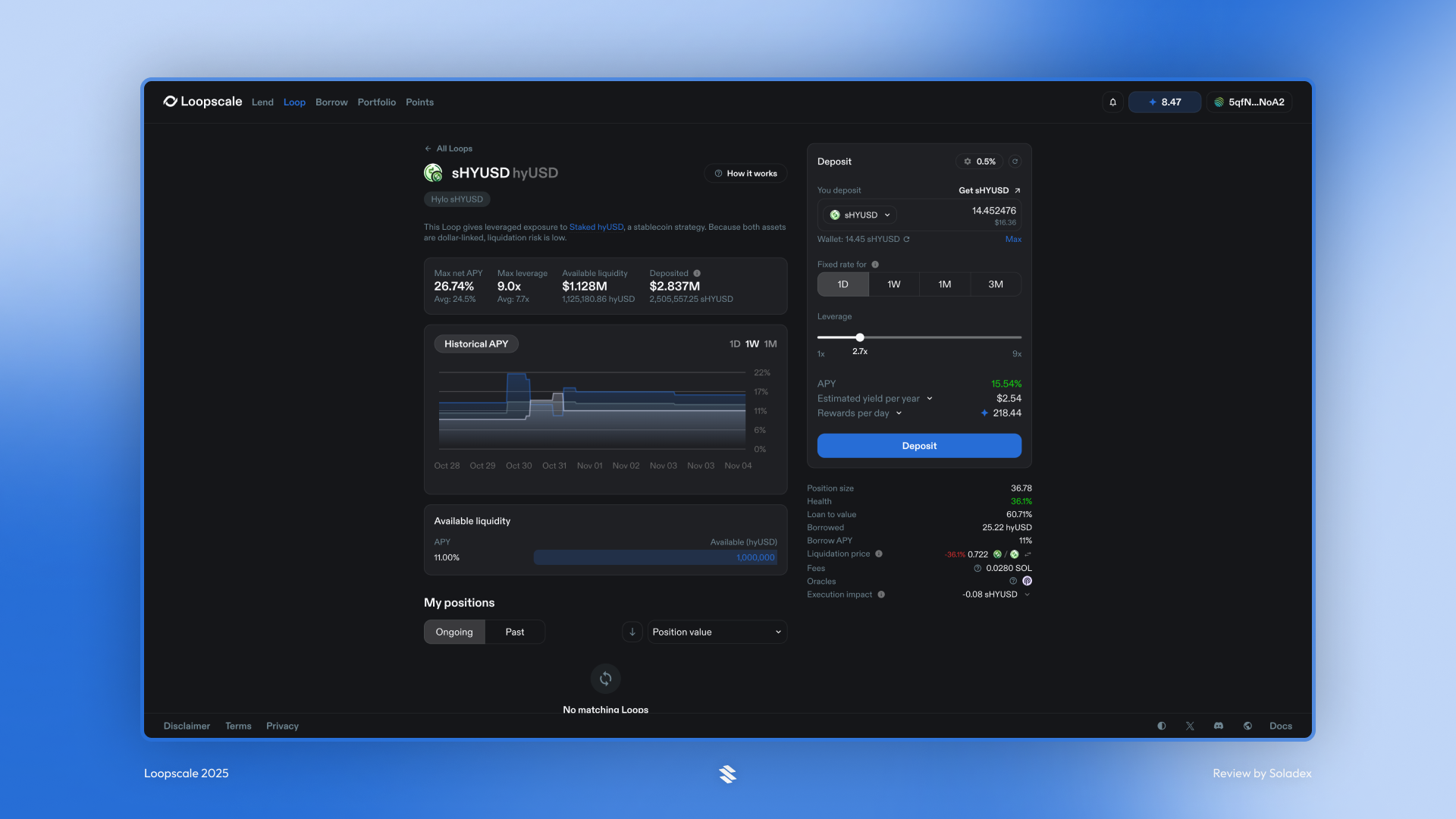
At any time, you can close your position by swapping sHYUSD back to hyUSD, repaying your loan, and keeping any remaining sHYUSD as profit. This is how it works for other tokens available in the looping mechanism. Loop positions can be market-neutral or directional (long or short).
Borrowing on Loopscale
Loopscale allows you to borrow by supplying collateral to the asset pools available. Loopscale has rates fixed for most of the pools; borrowers only have to pay the exact interest when the loan is repaid early. Since there are duration periods assigned to loans, borrowers are to repay by the due date, or loans will auto-extend. If the position is left without new offers, collateral is liquidated to avoid bad debt.
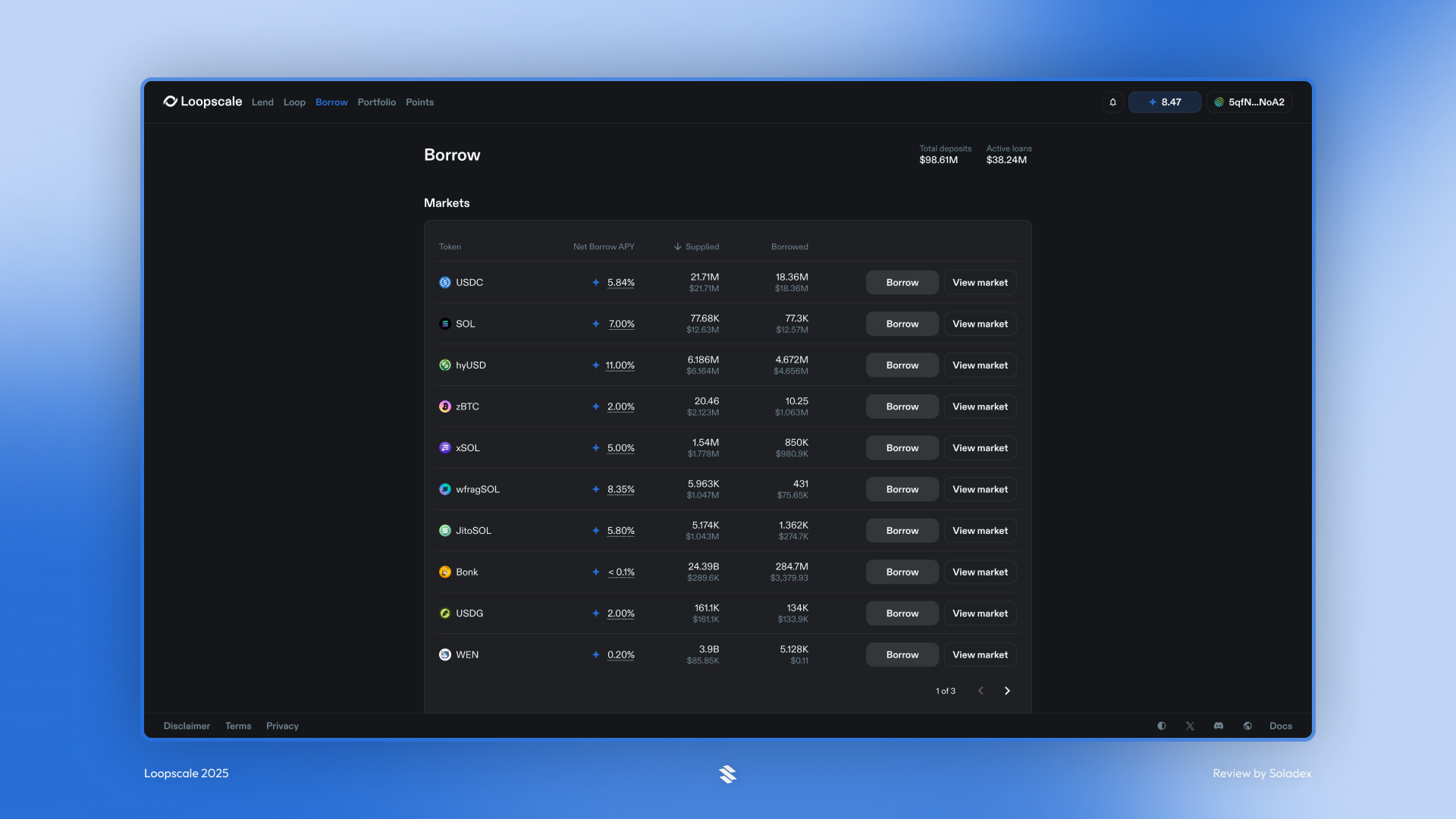
Select “Borrow” to supply your collateral (in any token available in your wallet and on the app), enter the amount and input the amount to be borrowed.
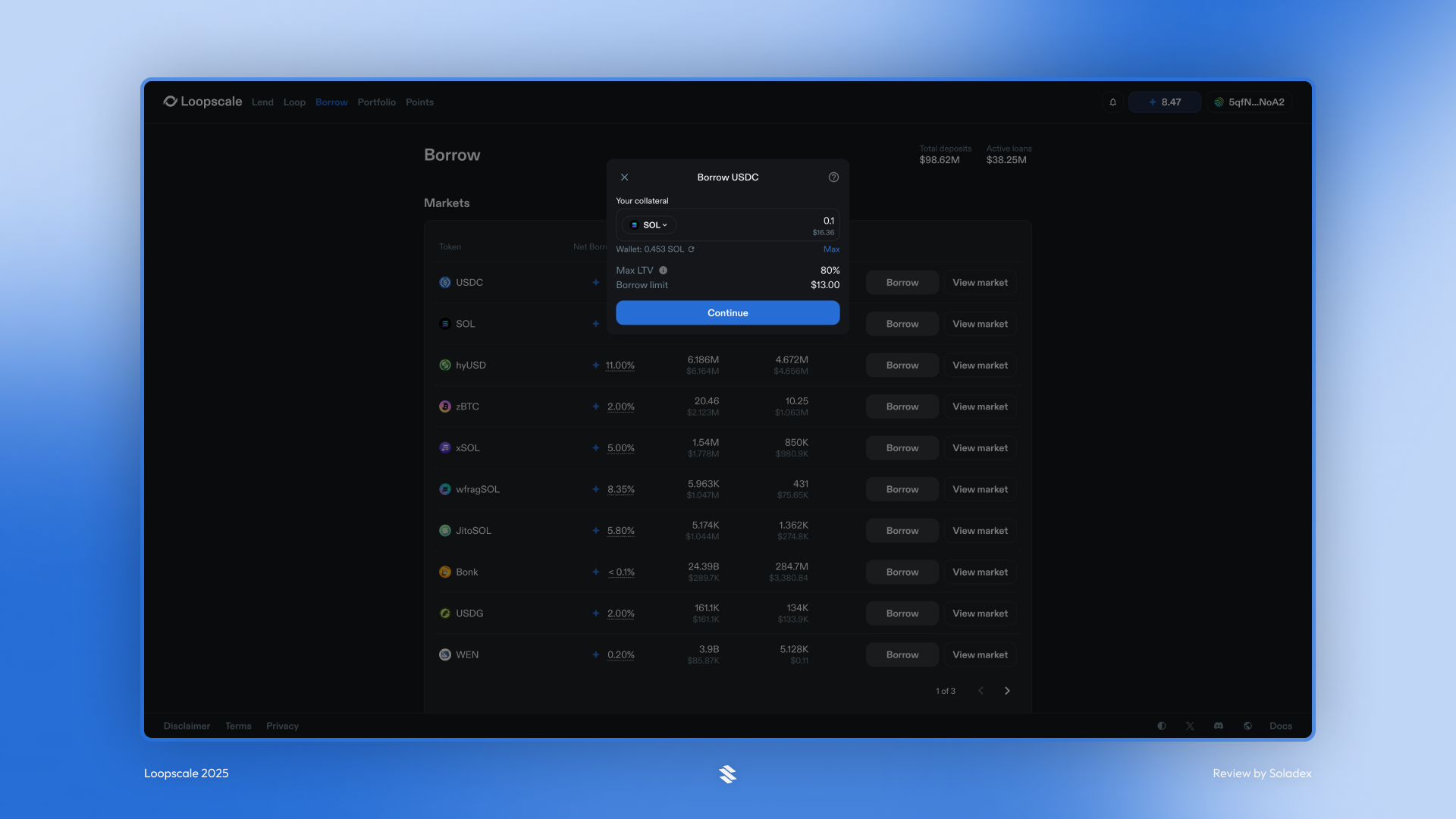
Portfolio
The Loopscale portfolio section curates all the current positions in a wallet, such as the amount deposited into the lending vault, the APY and the daily points rewards to be earned by keeping the lending position open.

I exited my looped position easily by accessing it through the portfolio section. All open active trades are listed here for easy access. Users can manage and update their trading positions through this section.
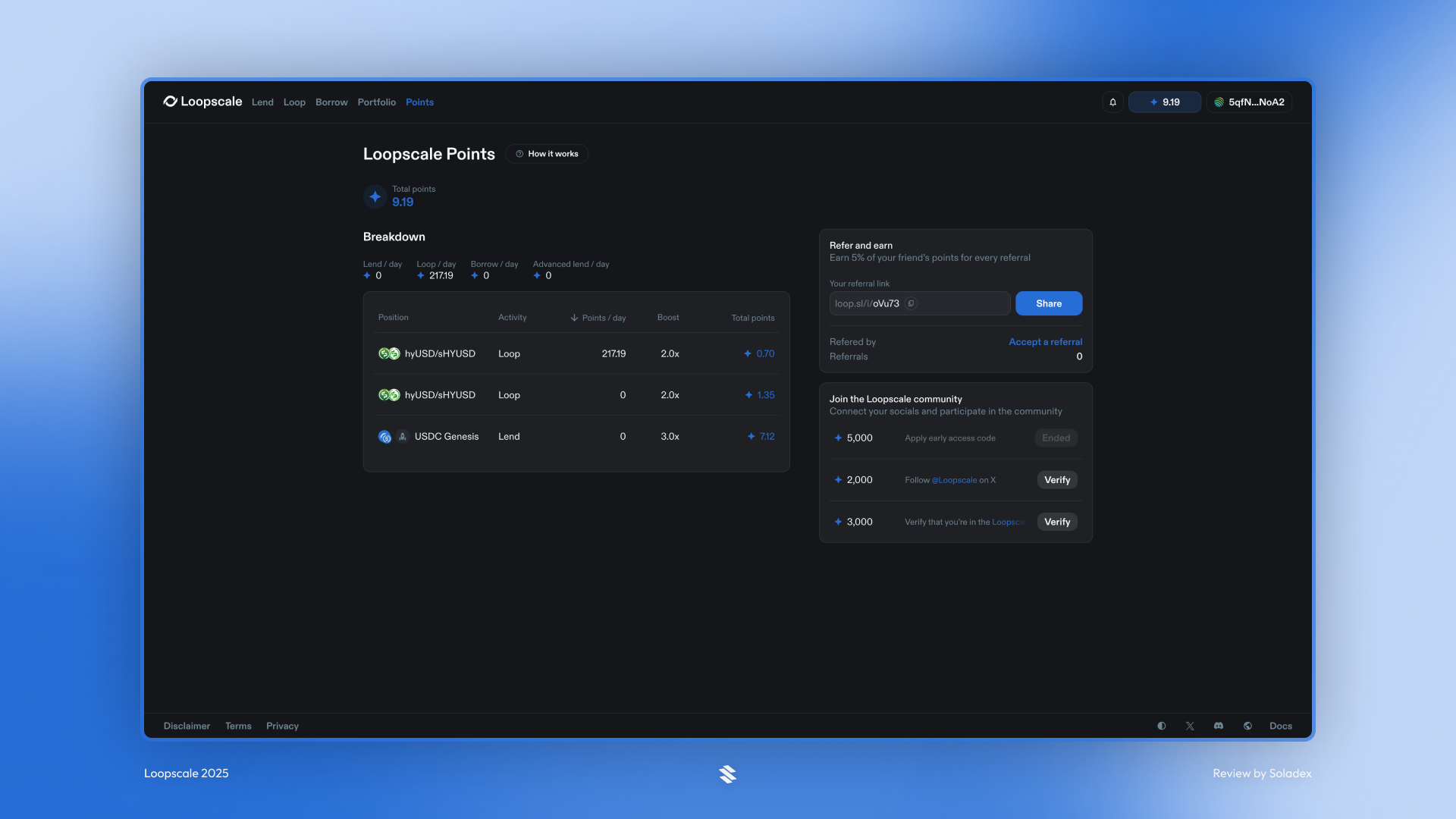
Loop Points
Loopscale has a points system for all onchain activities performed on the application. Points is a method used by many crypto projects to inform users that their activities are being tracked (with the hope of users being considered for incentives or rewards based on their points in the application).
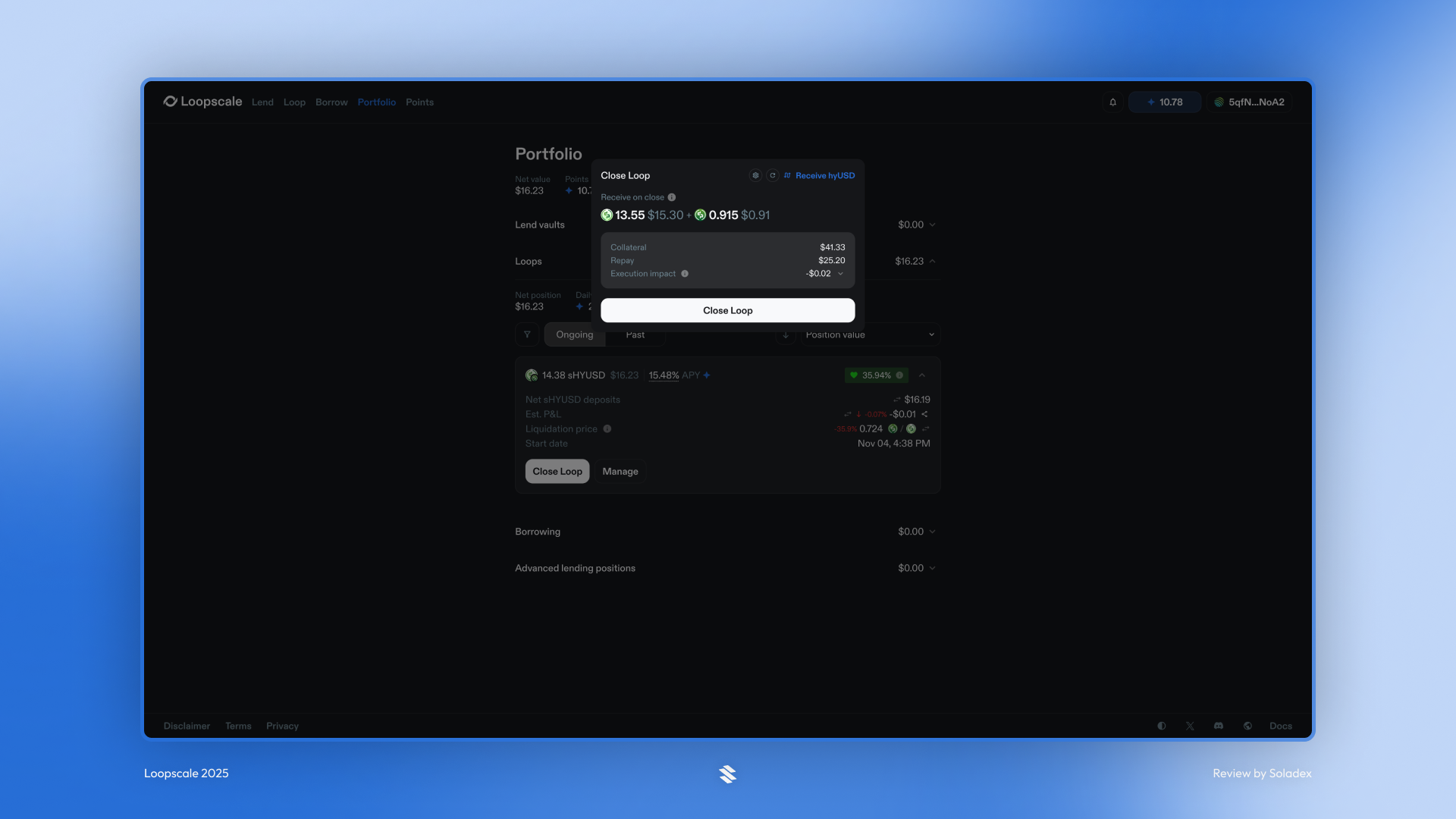
What are the Risks involved with Loopscale?
Despite its innovations, Loopscale has faced challenges. In April 2025, a vulnerability in its collateral pricing system was exploited, leading to a loss of around US$5.7 million and 1,200 SOL, roughly 12% of its TVL at the time. The incident highlights the risks inherent in new credit-market infrastructure, such as smart-contract bugs, oracle manipulation, and complex collateral schemes.
Conclusion
Loopscale protocol shows how onchain lending can operate apart from the simple pools common to most lending protocols, with variable rates to fixed-rate, matched markets with broader asset support and advanced strategies. Still, given the complexity with DeFi products and recent exploit history, it’s best viewed as a more advanced DeFi option: one with potential, but one where personal due diligence matters a lot.





